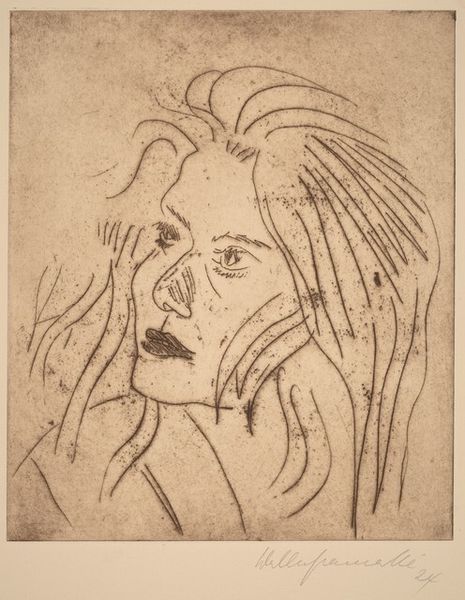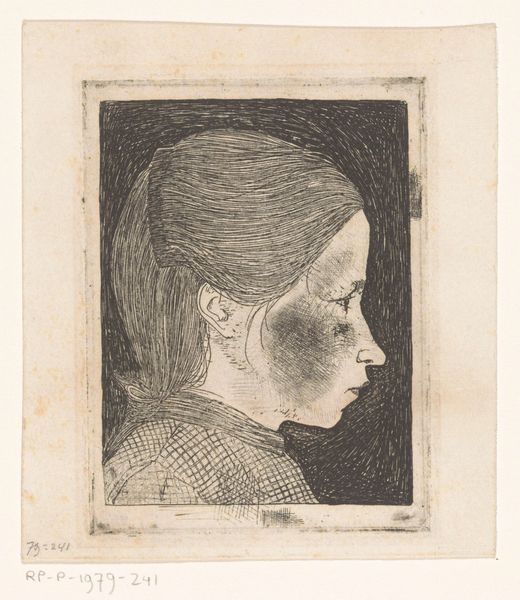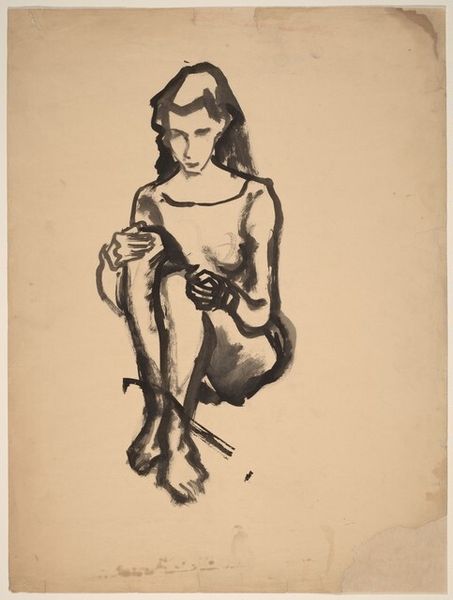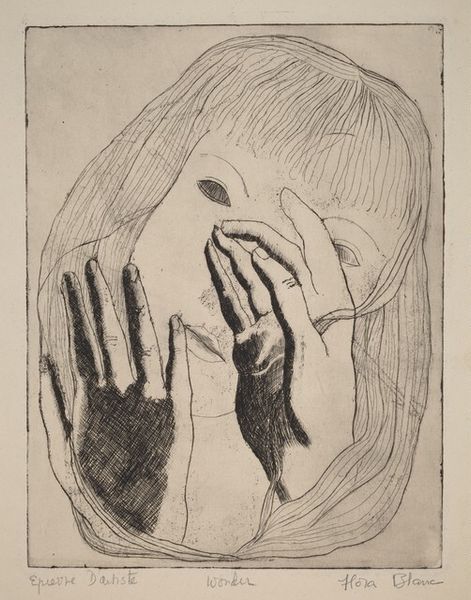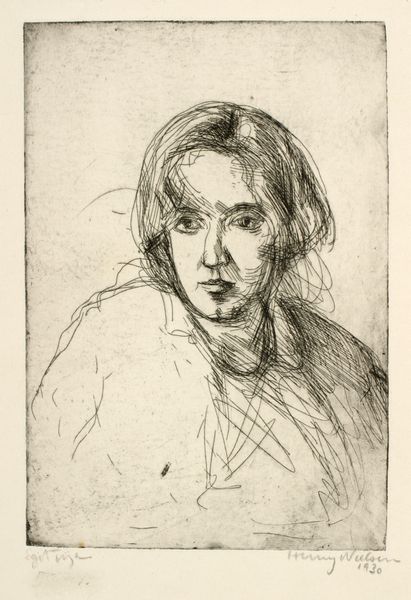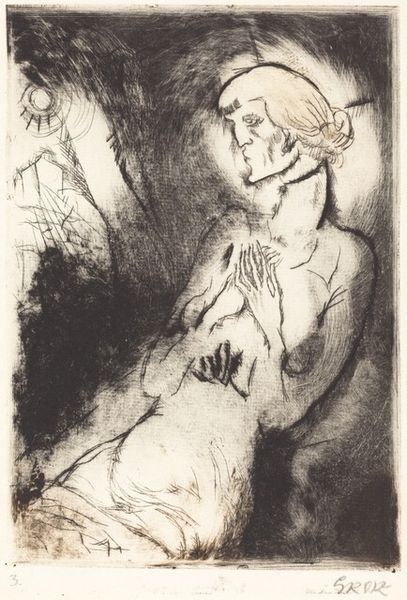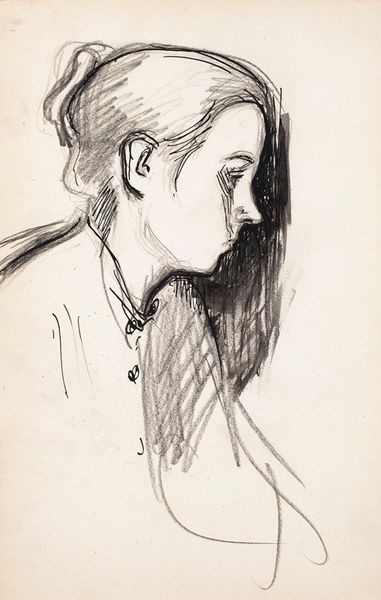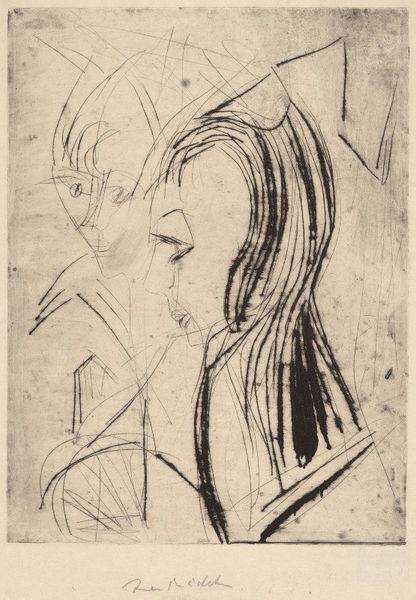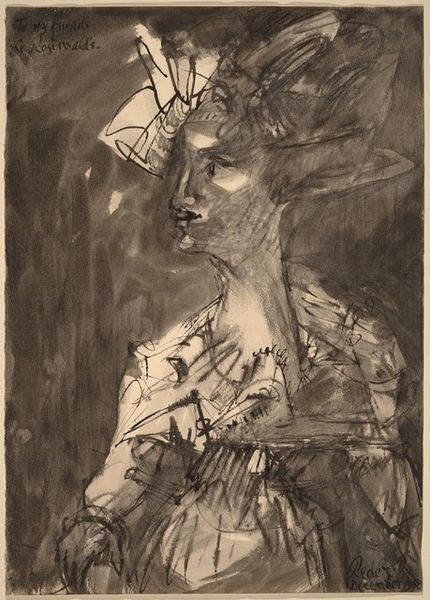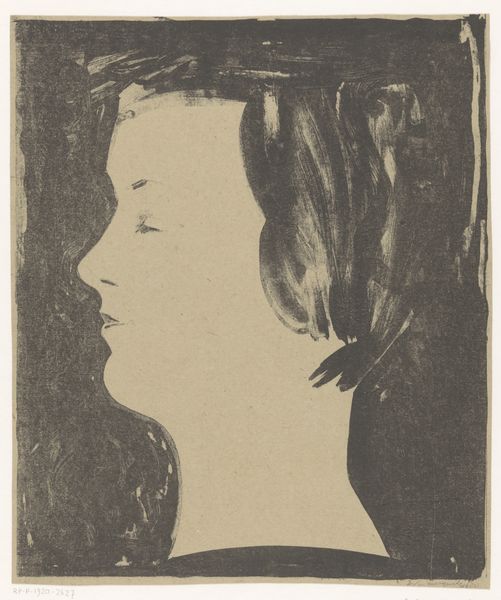
#
amateur sketch
#
imaginative character sketch
#
toned paper
#
light pencil work
# print
#
pencil sketch
#
personal sketchbook
#
pen-ink sketch
#
sketchbook drawing
#
portrait drawing
#
sketchbook art
Dimensions: plate: 45.2 × 32.7 cm (17 13/16 × 12 7/8 in.) sheet: 54 × 35.2 cm (21 1/4 × 13 7/8 in.)
Copyright: National Gallery of Art: CC0 1.0
Editor: This is "Modell," a print made around 1929 by Rolf Nesch. I find the subject’s gaze very intense, almost melancholic. How do you interpret this portrait within the art historical context of its time? Curator: Well, the intensity you perceive certainly reflects the anxieties prevalent in Germany during the Weimar Republic. Nesch, aligning himself with the leftist circles and the avant-garde, likely saw portraiture as a tool for social commentary. This isn’t just a depiction of an individual; it's an evocation of the era's disillusionment. The stark lines and the seemingly unfinished quality could be seen as a rejection of traditional, idealized representations, embracing a raw, honest portrayal reflecting social tensions. Does the somewhat ‘rough’ style give you any other ideas about what the artwork is doing, historically? Editor: I hadn’t thought of the 'rough' style as a conscious decision related to social commentary! I guess it does resist beautification. Curator: Exactly! Think about how artists during this period used printmaking not only for artistic expression but also as a readily accessible medium for mass dissemination of political ideas. The availability and reproducibility of prints were important factors for artists aiming to engage with the public sphere. Do you think this piece would function similarly to a political poster of the era? Editor: That makes sense. Although the image isn’t explicitly political, the air of defiance certainly feels like it is ‘taking a stance.’ I see how its existence as a readily-producible print also changes how it interacts with the public. Curator: Precisely. And the positioning of women in art during the time. Who got to be the 'model?' Did she have any agency in this image? These are questions we must continue to ask. Editor: That’s a great point. Considering this piece within the framework of social and political dynamics really sheds new light on its meaning. Curator: Indeed. It’s a reminder that art never exists in a vacuum; it’s always a product of and a response to its time.
Comments
No comments
Be the first to comment and join the conversation on the ultimate creative platform.
